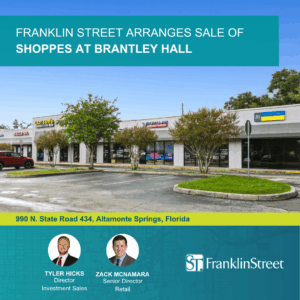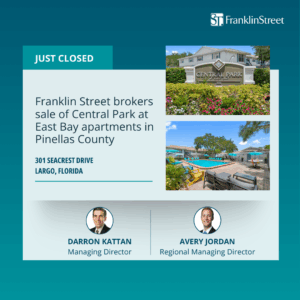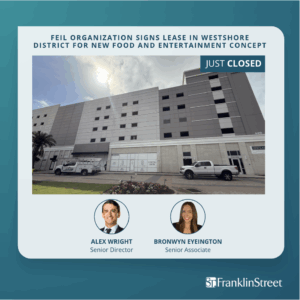Fitness centers, education facilities and specialty medical buildings that emerged as alternative net lease assets a few years ago are showing up in more property portfolios as investors hunt for yield in an increasingly crowded conventional net lease market.
Investors may not consider the properties part of the net lease mainstream yet, but the growing momentum suggests that perceptions could soon change: Non-traditional assets are starting to trade with more frequency and, subsequently, capitalization rates have started to compress, say net lease experts.
“Investors are moving away from the meat and potatoes: dollar stores, restaurants, auto parts stores and drugstores,” says Randy Blankstein, president of Northbrook, Ill. – based net lease brokerage Boulder Group. “That’s what happens when the meat and potatoes gets thin, as they are now.”
Investors willing to take a bet on gyms, pre-schools, charter schools, medical facilities or other off-the-beaten-path net lease properties over the past few years have acquired properties with cap rates as high as 8.5 percent to 9.5 percent, say experts.
Increasing demand recently knocked those cap rates down 100 basis points or so for some alternative net-lease properties, but the yields are still more attractive when compared with retail net-lease properties. Single-tenant retail properties commanded an average 6.75 percent capitalization rate in the first quarter of 2014, a drop of 10 percentage points from the fourth quarter last year, according to a Boulder Group report.
That was the case even as the supply of net lease properties increased by 17 percent in the first quarter as owners of lesser buildings hoped to cash in on the lack of supply in the market, according to New York-based real estate researcher Real Capital Analytics. Net lease sales volume totaled $44 billion in 2013.
Conventional net lease buyers have had few qualms about aggressive pricing, with many drugstore deals trading at a capitalization rate of around 5 percent in the first quarter. In January, Blankstein represented Shamburg, Ill.-based Crossroads Development Partners in the sale of a Chicago Walgreens to a Massachusetts-based 1031 exchange buyer. The $13 million price tag reflected a capitalization rate of below 4.9 percent.
By comparison, Scottsdale, Ariz.-based Store Capital, a private real estate investment trust (REIT) that focuses on sale-leaseback transactions, recently acquired Wright Career College in Overland Park, Kan., for $13.1 million, according to Christopher Volk, CEO and founder of the three-year-old firm. While he declined to disclose the cap rate, he acknowledged that it was north of the 7.5 percent listed in marketing materials and typical of the cap rates associated with such properties.
Additionally, the Boulder Group first quarter review reported that an LA Fitness in Little Rock, Ark., traded for $11.9 million at a capitalization rate exceeding 7 percent in February.
“Alternative net-lease investments are very attractive right now, and it’s a strictly a yield play,” says Mac McCall, regional managing partner in the Atlanta office of real estate brokerage Franklin Street. “It has propelled the growth of transaction volume in that sector and away from your traditional single tenant retail deal.”
Increasing comfort level
Buying non-traditional net lease properties provides benefits beyond yield. Schools, gyms and medical facilities diversify portfolios and provide growth opportunities given that most operators are expanding, Blankstein says. More importantly, alternatives don’t face the same ecommerce threats that have diminished bookstores, office supply stores, electronics stores and other sellers of commoditized goods, he adds.
“I think people are trying to find investments that are less impacted by the Internet,” Blankstein says. “They still have that experience with box stores disappearing or developing smaller footprints fresh in their minds.”
Yet alternative net lease assets also come with risks. Charter schools, for example, may face challenges from teachers’ unions and political leaders, as illustrated by New York Mayor Bill de Blasio’s recent attempts to scale back the concept.
More broadly, the most significant challenge centers on the specialized character of alterative net lease properties – typically they’re designed for a specific niche. So finding a user could be tough if the existing tenant should go out of business or choose not to renew a lease, experts say.
If you lose a fitness user, it’s going to be very hard to put another tenant in that space,” says Bradley Feller, a director with Tulsa, Okla.-based net-lease brokerage Stan Johnson Co.
“Maybe you can convert it to offices, but you’re going to struggle. It’s the same with a school; there is a limited universe of users that are going to be able to backfill it.”
Unlike buying a stand-alone drugstore of fast food restaurant – when an investor’s due diligence would include an analysis of the location, demographics, tenant’s credit scores and nearby competition – purchasing an alternative net lease property requires a deeper understanding of the user’s industry and business model, adds Feller, who is in Stan Johnson’s Chicago office.
What’s more, users of non-traditional net lease properties typically do not have an investment grade credit rating, Feller and other observers say.
In the past, those risks kept many individuals and smaller investors on the sidelines. But the potential higher returns combined with track records and growing brand awareness among KinderCare, La Petite Academy, LA Fitness, Life Time Fitness and other operators have alleviated misgivings about investing in the assets, observers say.
“A lot of investors thought re-tenanting a more specialized property would be more intensive or complicated than a plain old vanilla deal for a drugstore,” Blankstein says. “That resistance has just disappeared.”
Medical moves
The same is true for medical facilities. Large investors that specialized in medical office buildings historically have been the primary buyers of the product. But with the relatively new advent of stand-alone assets that house single-purpose operators such as dental groups or oncology, outpatient surgery and dialysis providers, smaller net lease investors are pursuing deals.
Aging baby boomers and the growing practice of shifting health care delivery to satellite locations all but ensures that the asset base will expand, experts say.
“Medical uses are moving to a lot of retail-type locations, which essentially makes them retail deals,” McCall says. “It’s definitely a trend we’ve seen over the last few years.”
In February, McCall represented the owner of a 3,200-sq.-ft. Aspen Dental building in suburban Atlanta in a $1.5 million sale to a 1031 exchange buyer. The transaction featured a 10-year double net-lease, in which the tenant pays for taxes and insurance but not maintenance, and a 10 percent rent hike every five years.
However, the controversial rollout of Obamacare last year, along with the litany of unknowns surrounding its ultimate implementation, at best cloud the clarity of health care delivery going forward.
State laws also could have a bearing on the industry and an investor’s willingness to buy: Some states limit the number of medical facilities while others do not, points out Volk of Store Capital, which has amassed a roughly $2 billion portfolio of restaurants, education buildings, health clubs, medical facilities and other properties.
“If there’s one place where there is going to be a lot of change, it’s going to be in the delivery of health care,” Volk says. “So if you’re an investor in health care real estate, you have to have conviction as to what that business will do over the next several years.”
Learning curve
Investing in medical facilities may not pose as dicey a proposition as buying charter schools. Not only do charter school owners face potential political risks that could result in revoked charters, but in some cases they also must deal with lease terms as short as three years and hope that renewals occur, says Volk, whose firm to date has not acquired a charter school.
“I think, in general charter, schools are viewed as doing a good job versus not doing a good job,” he adds. “But it’s still an experiment being flushed out.”
The risks vary from state to state. But for those reasons, a small number of large investors like Kansas City, Mo.-based REIT Entertainment Properties Trust (EPT), which owns movie theaters, recreation real estate and education facilities, have been the primary players in the charter school arena. It’s a niche that continues to grow, however. Entertainment Properties officials couldn’t be reached. But according to the comments of executives at the company’s most recent earnings call, charter school enrollment increased 13 percent to about 2.5 million students nationwide in 2013, and the number of schools grew by 7 percent to 6,500.
The company’s $538 million education portfolio includes 55 charter schools as well as a pre-school and a handful of private schools under construction, segments it recently added to its strategy. Including build-to-suit projects, Entertainment Proeprties invested $155 million in education assets in 2013, nearly double the amount in 2012. During the conference call, executives noted that build-to-suit education projects would reflect a cap rate of around 9 percent when completed.
Recently, net lease investments in for-profit post-secondary schools have also become susceptible to political risk, as the Obama Administration, federal lawmakers and some states have accused the industry of deceptive marketing practices. Regulators, state attorneys genera and others have sued some colleges for allegedly pressuring students to take out high-interest loans, among other claims.
Store Capital has invested in a number of for-profit colleges, including South University in Columbia, S.C., and the Art Institute of Colorado in Denver, Volk says. In 2012, it acquired five Corinthian Colleges (COCO) campuses in Northern California in a $40 million sale-leaseback.
Volk acknowledges that the industry is under siege and that investing in it carries “heading risk.” But he maintains that demand from students looking for a career fast track and the availability of student loan funding ensure that the concept will continue to exist for the foreseeable future.
“Any college, whether for-profit or nonprofit, is going to rely heavily on student loan funding, and I expect that student loan funding will be around forever since its one of the only ways for people to go to college or get trained,” he said. “And you need trained people if you want to grow the economy.” Download PDF



